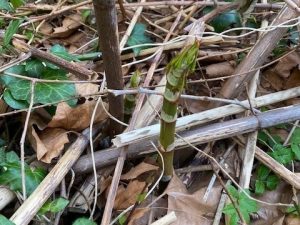One of the UK’s most invasive plant species, Japanese Knotweed, has been spotted growing earlier in the year than usual, sparking concern for property owners in the South East of the UK.
A recent discovery by Adam Brindle (CSKJ), the CEO and Founder of Japanese Knotweed Specialists, suggests that early signs of Japanese knotweed have already begun to emerge in the UK ahead of its usual season. Sightings in the South East might put property owners at risk as knotweed, notorious for its aggressive growth habit of up to 10cm a day in the summer, has already begun to establish itself.
 Typically, the first signs of new growth are expected in Spring, when purple shoots start to emerge between April and May, before turning into bamboo-like pillars and reaching an alarming rate of growth by June.
Typically, the first signs of new growth are expected in Spring, when purple shoots start to emerge between April and May, before turning into bamboo-like pillars and reaching an alarming rate of growth by June.
When Japanese knotweed has matured it becomes identifiable through its hollow canes, creamy white flowers (in late summer), heart shaped leaves, and aggressive, zig-zagging growth habits.
It is estimated that as many as 1.45 million homes in the UK alone could be affected by knotweed infestations. With a reputation for being difficult to kill, having this invasive weed professionally treated remains an urgent priority for property owners and developers, which could cause significant financial damage if it remains untreated.
Advised by the UK government, homeowners should be on high alert for any suspected knotweed infestations, which might be emerging earlier than anticipated this year. One study from the University of Cambridge, which explored the habits causing plants to flower a month earlier than historical averages, might even explain how climate change has become a catalyst of growth for unwelcome, invasive species like knotweed.
Identifying signs of a knotweed infestation earlier than Spring, Adam Brindle (CSJK) has said:
“Whilst we expect to see Japanese knotweed emerge as early as April (sometimes May), we’re seeing red flags that infestations could be developing much sooner. The problem with knotweed is how aggressively it grows, which can puncture through cracks and other vulnerabilities in concrete. At its worse, knotweed has the strength to destabilise a property’s foundations, which is what we aim to prevent. To stop it, make sure you seek the help of an expert.”
Specialists stress that whilst some property owners may be tempted to resort to DIY removal, this may be ineffective as it only takes small leftover traces of root fragment to regrow. If you suspect that your property may be affected by early signs of knotweed, it will take professional intervention to ensure that it doesn’t cause future issues.














